Loading

Templates
Loading
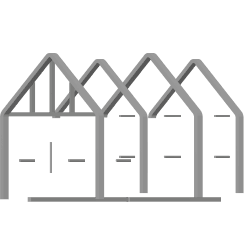
Structural Engineering
🇦🇺
AS/NZ
Concrete Retaining Wall to AS4678
Concrete Shear Wall to AS3600
Concrete Wall to AS3600
Concrete Slabs to AS3600
Concrete Two-way Slab Calculator to AS3600
Concrete Flat Slab Calculator to AS3600
📓
Design Guide: Concrete Slabs to AS3600
No sub pages
Concrete One-way Slab Calculator to AS3600
Neutral Axis Calculator: RC Section to AS3600
Concrete Beam Designer to AS3600
Concrete Column Designer to AS3600
Concrete Slab-on-grade Designer to AS3600
Concrete Rectangular Footing Designer to AS3600
Code source (2)
No sub pages
Code source (1)
No sub pages
Code source
No sub pages
Concrete Footing Design to AS3600-2018
No sub pages
Concrete Punching Shear Calculator to AS3600
Reinforcement Development Length Calculator to AS3600
Steel Beam and Column Designer to AS4100
CT - Standard Steel Section Capacity
No sub pages
Fillet Weld Group Calculator to AS4100
Weld Group - AS4100 (Example)
No sub pages
Bolt Group Calculator to AS 4100
Bolt Group - AS4100 - Fixed
No sub pages
Steel Web Plate Connection to AS4100
Steel Moment End Plate Connection to AS4100
Steel Flexible End Plate Connection to AS4100
Timber Beam Calculator to AS1720.1
CT - Timber Member Design to AS17201
No sub pages
Timber Column Calculator to AS1720.1
CT - Timber Column Design to AS17201
No sub pages
Truss Analysis and Design
2D truss input
No sub pages
Code source
No sub pages
Loading
Timber Strut Designer to AS1720.1
CT - Timber Column Design to AS17201
No sub pages
Timber Joints to AS1720.1
Timber Screwed Joint Designer to AS 1720.1
Timber Nailed Joint Designer to AS 1720.1
Timber Bolt Joint Designer to AS 1720.1
Load Combinations to AS1170.0
Load Combinator
No sub pages
Wind Load to AS/NZS 1170.2
🇪🇺
Europe
Loading
Seismic Spectrum Calculator to EC8
Eurocode_8
No sub pages
Loading
Steel Section Designer to EC3
Eurocode_Section_Analysis_SingleForces_00
No sub pages
Loading
Timber Beam Calculator to EC5
Design+Template+-+Timber+-+Rafters+and+joists+A1
No sub pages
Loading
Steel Base Plate Designer to EC3
Code source (1)
No sub pages
European & UK Steel Section Catalogue_combined (1)
No sub pages
Code source
No sub pages
Loading
Elastic Critical Moment Calculator for Lateral Torsional Buckling to EC3
Eurocode_Section_Analysis_Combined_00
No sub pages
Loading
Concrete One-Way Slab Designer to EC2
Code source
No sub pages
Loading
Concrete Corbel Designer to EC2
Design of Corbel based on Eurocode_etc_rev1
No sub pages
🇺🇸
US
Steel Beam and Column Designer to AISC 360
CT - Steel Beam and Column Design to AISC
No sub pages
Wind Loading Calculator to ASCE 7-10
Wind Load (Low-Rise)
ASCE710W_v2_4
No sub pages
Wind Load (Open Building)
ASCE710W_v2_4
No sub pages
Wind Load (Roof Components & Cladding)
ASCE710W_v2_4
No sub pages
Wind Load (Wall Components & Cladding)
ASCE710W_v2_4
No sub pages
Wind Load (Any Height)
ASCE710W_v2_4
No sub pages
ASCE710W_v2_4
No sub pages
Steel Baseplate Designer to AISC 360
Concrete Slab-on-grade Calculator to ACI 360R-10
CONCRETE SLAB ON GRADE - CT
No sub pages
Concrete Rectangular Beam Calculator to ACI 318-19 (IMP)
RC Rectangular Beams
No sub pages
Concrete Rectangular Spread Footing Designer to ACI
Purlin and Girts Size Calculator to AISI
Concrete One-way Slab Designer to ACI318
CT - RC Slab Design to ACI318
No sub pages
Concrete Column P-M Diagram Calculator to ACI
CLT Properties Calculator to ANSI/APA PRG 320
CLT Properties Data
No sub pages
Design Response Spectrum to ASCE 7
Composite Slab to ACI 318
Composite Beam to AISC 360
Concrete Shear Wall to ACI 318
Loading
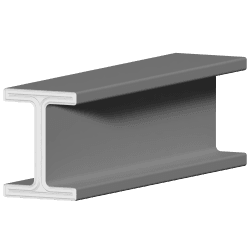
Beam Analysis Calculators
Loading
Single-Span Beam Analysis
Single-Span Beam Analysis
No sub pages
Loading
Multi-Span Beam Analysis Tool
Code source
No sub pages
Loading
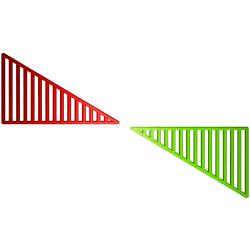
Beam Analysis using Macaulay's Theorem
Loading
Beam Analysis Calculator for simply supported beam with point moment
Code source
No sub pages
Loading
Beam Analysis Calculator for cantilever beam with point moment
Code source
No sub pages
Loading
Beam Analysis Calculator for simply supported beam with trapezoidal load
Code source
No sub pages
Loading
Beam Analysis Calculator for simply supported beam with triangular load
Code source
No sub pages
Loading
Beam Analysis Calculator for cantilever beam with triangular load
Code source
No sub pages
Loading
Beam Analysis Calculator for cantilever beam with point load
Code source
No sub pages
Loading
Beam Analysis Calculator for simply supported beam with UDL
Code source
No sub pages
Loading
Beam Analysis Calculator for cantilever beam with UDL
Code source
No sub pages
Loading
Beam Analysis Calculator for cantilever beam with trapezoidal load
Code source
No sub pages
Loading
Beam Analysis Calculator for beam with multiple loads
Code source
No sub pages
Loading
Beam Analysis Calculator for simply supported beam with point load
Code source (1)
No sub pages
Loading
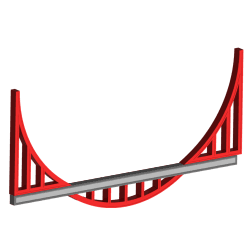
Beam Analysis using Anastruct
Code source
No sub pages
Loading
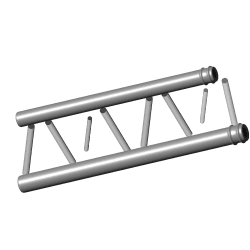
2D Truss Analysis using OpenSeesPy
💈
Column Buckling Calculator
Loading

Concrete Column P-M Diagram Calculator
Loading

Sample Project
Code source
No sub pages
Loading
Beam Analysis Calculator - Beam VC
Code source
No sub pages
Loading
Concrete Column Designer to AS3600
CT - RC Column Design to AS3600
No sub pages
Loading
Concrete Beam Designer to AS3600 - Beam VC
Loading
Concrete Rectangular Footing Designer to AS3600
Concrete Footing Design to AS3600-2018
No sub pages
Loading
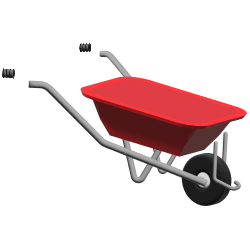
Civil Engineering
🔥
Bushfire Attack Level Calculator to AS 3959-2018
Bushfire Attack Level Calculator to AS 3959-2018
No sub pages
🚔
Road Base Calculator
No sub pages
🏔️
Geotechnical Engineering
Loading
Foundation Bearing Failure Modes and Capacities
Loading
Bearing Capacity Calculator - Meyerhof Approach
Code source
No sub pages
Loading
Bearing Capacity Calculator - Terzaghi
Bearing capacity
No sub pages
Loading
Weight to Volume relationships in soils
Soil Sample
No sub pages
⭕
Mohr's Circle for 2D Stresses
2D Mohr's
No sub pages
⚪
3D Mohr's Circle
3D Mohrs
No sub pages
Loading
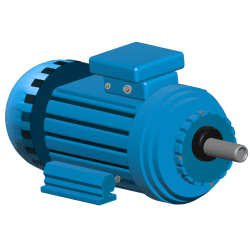
Mechanical Engineering
Loading
Air Duct Velocity Calculator
No sub pages
🚤
Buoyancy Force Calculator
No sub pages
Loading
Heat Transfer Calculator
No sub pages
Loading
Static Pressure Calculator
No sub pages
Loading
Dynamic Pressure Calculator
No sub pages
Loading
Room Ventilation Calculator: Area Method
No sub pages
🛩️
Mach Number Calculator
No sub pages
Loading
Volumetric Efficiency Calculator
Volumetric Efficiency of an ICE
No sub pages
Loading
Duct Pressure Drop Calculator
No sub pages
Loading
Room ventilation calculator: Occupancy Method
No sub pages
Loading
Log Mean Temperature Difference (lmtd) Calculator
No sub pages
Loading
Log Mean Temperature Difference in Counter Flow Heat Exchangers
No sub pages
Loading

Electrical Engineering
Loading
DC Power Circuit Calculator
No sub pages
Loading
Ohm's Law To Calculate Voltage In a Circuit
No sub pages
Loading
Inductive Reactance Calculator
No sub pages
Loading
Capacitive Reactance Calculator
No sub pages
Loading
Full Load Current Calculator
No sub pages
Loading
Generator Fault Current Calculator
No sub pages
Loading
Generator Load Current Calculator
No sub pages
Loading
Transformer Full Load Current and Turns Ratio Calculator
No sub pages
Loading
Transformer Short Circuit Calculation
No sub pages
Loading
Short Circuit Current Calculation For Cable AS/NZS 3008
No sub pages
Loading
Battery Capacity Calculator
No sub pages
Loading
3-Phase Power Calculator
No sub pages
Loading
Wire Voltage Drop Calculator to AS/NZS 3008
No sub pages
Loading
AC Induction Motor Speed Calculator
No sub pages
Loading
AC Current Calculator (3Ph, 1Ph)
No sub pages
Loading
Electric Motor Torque Calculator
No sub pages
🧾
Electricity Bill Calculator
No sub pages
🔥
Arc Flash Calculator
No sub pages
Loading
RLC Circuit Calculator
Code source
No sub pages
Loading
Maximum Demand Calculator to AS/NZS 3000
MAXIMUM DEMAND CALC - AS3000
No sub pages
Loading
Energy Optimisation Calculator
Code source
No sub pages
Loading

Maths Calculations
Loading
Square, Cube, Square Root and Cubic Root Calculator
No sub pages
📐
Pythagorean Theorem Calculator
📏
Determine the Length Of a Side
No sub pages
📐
Triangle Angle Calculator
No sub pages
📐
Equilateral Triangle Calculator
No sub pages
📐
Right Triangle Calculator
No sub pages
📜
Heron's Formula Calculator
No sub pages
📐
Calculate Arc Length and Sector Area
No sub pages
📏
Circle Dimension Calculator
No sub pages
🟨
Cube Surface Area & Volume Calculator
No sub pages
⚽
Dodecahedron: Surface Area & Volume
No sub pages
💈
Volume & Surface Area of Cylinder Calculator
No sub pages
🔵
Calculate Sphere Surface Area And Volume
No sub pages
Loading
Hexadecimal to Binary Converter
Binary Spreadsheet
No sub pages
Loading
Prime Number Checker
Prime Number Spreadsheet
No sub pages
Loading
Poisson Distribution Calculator
No sub pages
Loading
Harmonic Mean Calculator
Code source
No sub pages
📐
Tangential Angle Method for setting out circular curves
Code source (1)
No sub pages
Loading
Harmonic Number Calculator
Code source
No sub pages
📈
Slope and Gradient Calculator
No sub pages
Loading
Polar-Cartesian Coordinate Converter
Code source (5)
No sub pages
Code source (4)
No sub pages
Code source (3)
No sub pages
Code source (2)
No sub pages
Code source (1)
No sub pages
Code source
No sub pages
📈
Function Plotter
Code source
No sub pages
📐
Euler Line Calculator
Euler Line
No sub pages
Loading
Convolution Calculator
Loading

Physics Calculations
Relativity and Quantum Mechanics
🚀
Energy Mass Equivalency
No sub pages
Statics
Loading
Slenderness Ratio Calculator
No sub pages
Loading
Moment of Inertia Calculators
Loading
Moment of Inertia Calculator: Solid Rectangular Section
No sub pages
Loading
Moment of Inertia Calculator: Rectangular Hollow Section (SHS/RHS)
No sub pages
Loading
Moment of Inertia Calculator: Solid Circular Section
No sub pages
Loading
Moment of Inertia Calculator: Circular Hollow Section
No sub pages
Loading
Moment of Inertia Calculator: I Beam
No sub pages
Loading
Moment of Inertia Calculator: T Section
No sub pages
Loading
Moment of Inertia Calculator: Angle Section
No sub pages
Loading
Moment of Inertia Calculator: Channel Section
No sub pages
Loading
Moment of Inertia Calculator: Triangular Section
No sub pages
Loading
Moment of Inertia Calculator: Trapezoidal Area Section
No sub pages
📖
Hooke's Law
No sub pages
Loading
Radius of Gyration in Structural Engineering
aisc-shapes-database-v160-all_sects
No sub pages
Loading
Centre of Mass Calculator
No sub pages
Loading
Centre of Gravity Calculator
Code source
No sub pages
Loading
Stress Calculator
No sub pages
Loading
Strain Calculator
No sub pages
Loading
Elastic Section Modulus Calculator
aisc-shapes-database-v160-all_sects
No sub pages
Loading
C-Channel Shape Elastic Section Modulus Calculator
No sub pages
Loading
Diamond Shape Elastic Section Modulus Calculator
No sub pages
Loading
Hollow Rectangle Square Elastic Section Modulus Calculator
No sub pages
Loading
Hollow Round Elastic Section Modulus Calculator
No sub pages
Loading
Circle Round Elastic Section Modulus Calculator
No sub pages
Loading
I Beam Elastic Section Modulus Calculator
No sub pages
Loading
Rectangle Elastic Section Modulus Calculator
No sub pages
Loading
Mass Moment of Inertia
Loading
Solid Cylinder - Central Axis
No sub pages
Loading
Solid Cylinder - Diameter
No sub pages
Loading
Cuboid
No sub pages
Loading
Hoop - Central Axis
No sub pages
Loading
Hoop - Diameter
No sub pages
Loading
Solid Sphere
No sub pages
Loading
Hollow Sphere
No sub pages
Loading
Rod - Centre Normal Axis
No sub pages
Loading
Rod - End face Axis
No sub pages
Loading
Regular Tetrahedron
No sub pages
Loading
Regular Octahedron
No sub pages
Loading
Right Solid Circular Cone
No sub pages
Loading
Right Hollow Circular Cone
No sub pages
Loading
Torus
No sub pages
Loading
Torsion of Shafts
Loading
I-Section Shaft Torsion
No sub pages
Loading
C-Channel Section Shaft
No sub pages
Loading
Hexagon Shaft Torsion
No sub pages
Loading
Square Shaft Torsion
No sub pages
Loading
Rectangle Shaft Torsion
No sub pages
Loading
Ellipse Shaft Torsion
No sub pages
Loading
Hollow Cylinder Shaft Torsion
No sub pages
Loading
Solid Cylinder Shaft Torsion
No sub pages
Loading
Rectangle Hollow Shaft Torsion
No sub pages
Loading
Triangle Shaft Maximum Allowable Torsion
No sub pages
Loading
Shear Modulus Calculator
No sub pages
Loading
Relationship between Young's modulus, bulk modulus and Poisson’s ratio
No sub pages
🌉
Steel Wire Tension Calculator
Code source
No sub pages
Loading
Poisson Ratio Calculator
Poisson's Ratio
No sub pages
Loading
Mass Timber Self-weight Calculator
Code source
No sub pages
Loading
Wood Density Calculator
wood information
No sub pages
Loading
Wood Moisture Content Calculator
wood moisture calc
No sub pages
Loading
Wood Specific Gravity Calculator
wood information
No sub pages
Loading
Wood Shrinkage Calculator
wood information
No sub pages
Dynamics
⚡
Potential Energy Calculator
No sub pages
🍂
Freefall Height Calculator
No sub pages
🍂
Freefall Velocity Calculator
No sub pages
🏎️
Acceleration vs. Velocity equations
No sub pages
⭕
Rotational Kinetic Energy Calculator
No sub pages
🎡
Angular Velocity Calculator
No sub pages
👟
Work Calculator
No sub pages
🚃
Impulse and Momentum Calculator
No sub pages
Loading
Force Due To Acceleration
No sub pages
🚄
Kinetic Energy Calculator
No sub pages
🕰️
Pendulum Calculator
No sub pages
〰️
Simple Harmonic Motion Calculator
Code source
No sub pages
〰️
Frequency of a Simple Harmonic Motion Calculator
Code source
No sub pages
〰️
Time Period of a Simple Harmonic Motion Calculator
Code source
No sub pages
〰️
Damped Harmonic Motion Energy Loss Calculator
Code source
No sub pages
⭕
Centripetal Force Calculator
Centripetal Force-Acceleration Calculator
No sub pages
〰️
Velocity of a Simple Harmonic Motion Calculator
Code source
No sub pages
🎸
Longitudinal Vibration of Rods Calculator
Code source
No sub pages
Loading
Dunkerley’s Method for Beam Vibration Calculator
Code source
No sub pages
〰️
Acceleration of a Simple Harmonic Motion Calculator (related to the displacement)
Code source
No sub pages
🎡
Angular Acceleration Calculator
No sub pages
〰️
Acceleration of a Simple Harmonic Motion Calculator
Code source
No sub pages
🎡
Average Angular Acceleration Calculator
No sub pages
🔊
Total Harmonic Distortion (THD) Calculator
Code source
No sub pages
〰️
Displacement of Harmonic Motion Calculator
Code source
No sub pages
Astrophysics
🛰️
Orbital Mechanics Calculator
Orbital Mechanics
No sub pages
🪐
Kepler's First Law Calculator
Code source
No sub pages
🪐
Kepler's Third Law Calculator
Code source
No sub pages
🪐
Y-coordinate of Keplerian Orbit
Code source
No sub pages
🪐
Gravitational Force Calculator
No sub pages
Acoustics and Optics
Thermodynamics and Fluid Dynamics
🔥
Specific Heats of Solids and Heat Transfer Calculator
Solids - Specific Heats
No sub pages
💨
Pressure Calculator
No sub pages
Loading
Bernoulli Calculator
Loading
Bernoulli Equation Calculator: Volume Flow Rate
No sub pages
Loading
Bernoulli Mass Flow Rate Calculator
No sub pages
🎈
Hot Air Balloons - Calculating Lifting Force
No sub pages
📖
Froude Number Calculator: Open Channel Flow
No sub pages
🌬️
Air Density and Specific Weight Calculator
Density and Specific Weight
No sub pages
💨
Total and Partial Pressure Calculator
No sub pages
🧲
Magnetic Prandtl Number Calculator
No sub pages
🌊
Reynolds Number Calculator
Code source (3)
No sub pages
Code source (2)
No sub pages
Code source (1)
No sub pages
Code source
No sub pages
🧲
Magnetic Reynolds Number Calculator for eddy current braking
No sub pages
🧲
Magnetic Reynolds Number Calculator
No sub pages
🌊
Knudsen Number Calculator
No sub pages
🌊
Reynolds Number Calculator (for motion of a viscous fluid)
No sub pages
🌊
Péclet Number Calculator
Loading
Péclet number (for heat transfer using Reynolds number)
No sub pages
Loading
Péclet number (for mass transfer using Reynolds number)
No sub pages
🌊
Richardson Number Calculator
No sub pages
🌊
Bejan Number Calculator
No sub pages
✈️
Drag Force and Drag Coefficient Calculator
No sub pages
🌊
Density, Specific Weight and Specific Gravity Calculator
🛩️
Mach Wave Angle Calculator
Code source
No sub pages
Loading
Diffusion Rate Calculator
No sub pages
Loading
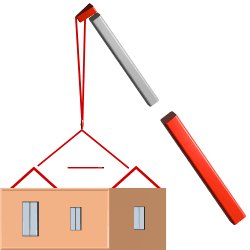
Construction Calculations
🚚
Truck Bed Volume and Weight Calculator
Code source
No sub pages
Loading
Calculate Cement, Sand & Aggregate Quantity in Concrete
🌊
Water Tank Capacity Calculator
No sub pages
Loading
Rebar Weight Calculator
No sub pages
Loading

Products & Materials
📚
Articles & Resources
⚒️
Engineering
🧭
General
Loading
Engineering Calculation Template – Detailed Guide
No sub pages
🤷
No more engineers? Understanding Australia’s engineering skills shortage
No sub pages
📐
Quality control in engineering calculations using Units
No sub pages
Loading
Engineering Design Guide Articles
📓
Design Guide: Trusses
Loading
Common Truss Types
No sub pages
Loading
Truss Analysis
No sub pages
Loading
Steps for Designing Truss Members to Australian Standards
No sub pages
📓
Design Guide: Shear Wall to Australian Standards
No sub pages
📓
Design Guide: Shear Wall to ACI Standards
No sub pages
📓
Design Guide: Pad Footings
No sub pages
📓
Design Guide: Purlins and Girts for Structural Support in Buildings
No sub pages
📓
Design Guide: Structural Load Calculations
No sub pages
📓
Design Guide: RC Staircase
No sub pages
📓
Design Guide: Limit State Design of steel members to AS4100
No sub pages
📓
Design Guide: Steel Bracing Systems
Loading
Steps for Designing Steel Bracing - General Guide
No sub pages
Loading
Steel Bracing Design For Limit State
No sub pages
Loading
Steps for Designing Steel Bracing to Australian Standards
No sub pages
📓
Design Guide: Concrete Footing to AS3600
No sub pages
📓
Design Guide: Timber Members
🏢
Structural Engineering Articles
👍
Steel Design Rules of Thumb for Structural Engineers
No sub pages
Loading
Cement 101: What you need to know about this major construction material and it’s alternatives
New Microsoft Excel Worksheet
No sub pages
Loading
High strength structural steel and Its Properties
No sub pages
❓
Essential Knowledge for Structural Engineers: Skills and Expertise
No sub pages
🏟️
Australia's Top Stadiums: Engineer's Perspective
No sub pages
Loading
OpenSeesPy vs ETABS: 2D Frame Modal Analysis Comparison
Loading
Get started with OpenSees on CalcTree
Code source
No sub pages
Loading
Mechanical Engineering Articles
Loading
Electrical Engineering Articles
🌱
Sustainability
Loading
Engineering Designs & Codes
🧵
Sustainable Materials in Civil Engineering
🧱
Hempcrete: Building Smart, Green, and for the Future
No sub pages
Loading
Sustainability and mass timber construction: top of mind and leading edge
No sub pages
Loading
Top 5 Innovative & Sustainable Materials that should be mainstream in the construction industry
No sub pages
Loading
Low Heat Cement 101 And Its Alternatives
No sub pages
🎈
Embodied Carbon
Loading
Physics
🔥
Thermodynamics
🔥
Intro to Thermodynamics
No sub pages
🔄
Brayton Cycles
Loading
Brayton Cycle Calculator
No sub pages
Loading
Brayton Cycle With Regeneration Calculator
No sub pages
Loading
Brayton Cycle With Reheater Calculator
No sub pages
🔄
Dual Combustion Cycle
Loading
Duel Combustion Cycle Calculator
No sub pages
🔄
Diesel Cycle
Loading
Diesel Cycle Calculator
No sub pages
🔄
Power Cycles: The Carnot and Otto Cycle
🔥
Heat Engine
Loading
Heat Engine Calculator
No sub pages
🧊
Refrigerator
Loading
Refrigerator Calculator
No sub pages
🔥
Heat Pumps
Loading
Heat Pump Calculator
No sub pages
Loading
Types of Pulleys & Calculators
No sub pages
Loading
Logic Gates explained with calculators
No sub pages
🧮
Matrix Algebra and its applications in Engineering and Physics
Matrix Algebra Operations
No sub pages
🎓
Fundamentals
🎓
Beam Analysis and Design Fundamentals
No sub pages
🎓
Fundamentals: Newton’s 3 Laws of Motion
No sub pages
🎓
Fundamentals: Second Moment of Inertia
No sub pages
💡
Energy–momentum relation
Loading
Energy–momentum Relation Calculator
No sub pages
Loading
Applications of Fourier Series in Signal Processing and Engineering
Fourier
No sub pages
🏗️
Construction
🚇
Megaproject Spotlight: Constructing the World’s Longest Railway Tunnel
No sub pages
🕌
Modernism & Mishaps in Mega Project Management
No sub pages
🌉
Lessons from the Tacoma Bridge Collapse: Avoiding Historic Construction Failures
No sub pages
🗼
Lessons from Historic Construction Failures: Tower of Pisa and Beyond
No sub pages
Loading
Mathematics
Loading
Partial derivatives
No sub pages
Loading
Probability and Statistics, including Distributions and Hypothesis Testing
No sub pages
Loading
17 Of The Most Important Equations You'll Ever Learn
No sub pages
🏹
Vector Calculus and its Applications in Science
No sub pages
Loading
Integral and Trigonometric Relationships
No sub pages
💻
Technology
🧠
The Rise of Generative AI And Its Challenges
No sub pages
Loading
ChatGPT Challenges in Engineering Data Calculation
No sub pages
Loading
Construction industry challenges: Common Data Environments
No sub pages
Loading
Importance of data integration for the construction industry
No sub pages
☁️
Why Cloud-Based Software is the Future of the Construction Industry
No sub pages
💻
Civil Engineering Software To Transform Your Calculations
No sub pages
🖥️
Transform Your Python Script into a Web App with CalcTree: A Step-by-Step Guide
🔗
Streamlining Your Workflow: How to Connect Spreadsheets and Python Scripts with CalcTree
Loading
Embedding Spreadsheet Values in Reports with CalcTree
Structural Embodied Carbon Calculation
No sub pages
🖥️
Transform Your Engineering Spreadsheets into Web Apps with CalcTree: A Step-by-Step Guide
CT - RC Column Design to AS3600
No sub pages
🧠
Enhancing Civil Engineering Calculations in Chatbots with CalcTree API Integration
Code source
No sub pages
📖
Guides & Support
🏁
Getting started
🔢
Native formulas
No sub pages
Loading
Spreadsheets
a_basic_spreadsheet
No sub pages
🐍
Python
Code source
No sub pages
🔗
Linking parameters
No sub pages
✍️
Add Content
📍
Headings, Toggles, Lists and Columns
No sub pages
Loading
Columns
No sub pages
🖼️
Images
No sub pages
🧮
LaTex equations
No sub pages
📄
Pages
No sub pages
Loading
Page Layout
No sub pages
Loading
Math formula
🔌
Spreadsheets
👟
Quick start
No sub pages
☁️
Upload a Spreadsheet
No sub pages
🔗
Spreadsheet Parameters
No sub pages
🔽
Spreadsheet Drop-downs
Book1
No sub pages
🔢
Spreadsheet Tables
No sub pages
📈
Spreadsheet Charts
No sub pages
🖊️
Edit Spreadsheets on CalcTree
No sub pages
🔢
Spreadsheet errors
No sub pages
🐍
Python
👟
Quick start Python
Code source
No sub pages
Loading
Run Python Scripts
No sub pages
🔗
Use Parameters with Python
No sub pages
⚖️
Units in Python
Code source
No sub pages
🔢
Python Tables
Code source
No sub pages
📚
Python Libraries List
No sub pages
📉
Python Charts
🦗
Grasshopper
No sub pages
☁️
API
No sub pages
🖨️
Print report
📣
Share Pages
No sub pages
Loading
Leverage Templates
♻️
Duplicate Templates
No sub pages
📓
Create Templates
No sub pages
CalcTree’s Calculation Verification Process
No sub pages
🚦
Publish Templates
No sub pages
👷
Manage Workspace
🔍
Source Viewer
No sub pages
🌵
Contact CalcTree
🛎️
Changelog
No sub pages
🐞
Report Bug
No sub pages
💬
Give Feedback
No sub pages
💡
Request Feature
No sub pages
🗣️
Community Chat (Slack)
No sub pages
🏢
Enterprise Sales
No sub pages
🌵
CalcTree
💡
Opinions
📈
Why contech needs more product-led growth companies
No sub pages
🔨
Contech is the new fintech: Why it’s time to get in!
No sub pages
⛰️
Mission
🗺️
CalcTree’s mission - Bringing engineering, designs and calculations together
No sub pages
🌏
Embracing a Sustainable Existence on Planet Earth And Beyond
No sub pages
📣
Check out our CEO's 'Startup Daily' interview!
No sub pages
💗
Culture
🎓
Interning at CalcTree
No sub pages
🪟
A window into CalcTree’s values and culture
No sub pages
⚖️
Work-Life Balance is a top priority at CalcTree - Check out our Co-Founder Tim Rawling’s ‘Balance the Grind’ Interview for his thoughts on it
No sub pages
👋
Meet the founders behind CalcTree
No sub pages
👀
Job openings
🏛️
Investors
Loading
CalcTree joins Suffolk Technologies Boost Program
No sub pages
🏦
Meet the investors behind CalcTree
No sub pages
🦌
Check us out in the Antler network!
No sub pages
🎉
We've secured Antler backing!
No sub pages
⚖️
Legal
No sub pages
📉
CalcTree benefits: reduce risk
No sub pages
⏩
CalcTree benefits: increase efficiencies
No sub pages
🗺️
CalcTree benefits: improve collaboration
No sub pages
💡
CalcTree benefits: accelerate innovation
No sub pages
Bust Common Myths About Java Programming
No sub pages
Loading

Tensile Strength and Capacity Control of the W-Shape Sections According to AISC 360-16
AISC
No sub pages
Estados de Vigas de Concreto
Code source
No sub pages
Loading

Concrete Cylinder Strength Vs Cube Strength
No sub pages
Loading

Earthquake Design Action Calculation
Sıvılaşma Verileri Tablosu
-hepsi bir sayfada-
GeoProje - SıvılaÅma - TBDY - düzenlendi
No sub pages
Grafikler
GeoProje - Sıvılaşma - TBDY
No sub pages
Korelasyon Katsayıları ve Diğer Parametreler (CS,CB,CE,CR,CN,CM,α,β)
GeoProje - Sıvılaşma - TBDY
No sub pages
Deprem ve Dinamik Özellikler (SDS,τdeprem,CRRM7.5)
GeoProje - Sıvılaşma - TBDY
No sub pages
Gerilme ve Deformasyon Özellikleri (σ'vo,rd,IDI,εv)
GeoProje - Sıvılaşma - TBDY
No sub pages
Zemin Direnci ve Dayanımı (SPT-N, N1,60, N160f, CRRM7.5,τR,τdeprem,Fα,)
GeoProje - Sıvılaşma - TBDY
No sub pages
Zemin Fiziksel Özellikleri (Derinlik,γn,γw,G.S.,γlim,γmax,S)
GeoProje - Sıvılaşma - TBDY - düzenlendi
No sub pages
Proje İle İlgili Bilgiler (Proje Adı, İl/İlçe, Ada, Parsel, SK-1, Y.A.S.S., Temel Alt Kotu)
GeoProje - Sıvılaşma - TBDY - düzenlendi
No sub pages
GeoProje - Sıvılaşma - TBDY - düzenlendi
No sub pages
Loading

Concrete Column Designer to AS3600
CT - RC Column Design to AS3600
No sub pages
EM Wave Propagation Calculator
Code source
No sub pages
section properties with units
Forward Kinematics of Robotic Arm with 6 Degrees of Freedom
DH_P
No sub pages
İKSA YAPILARI PROJELENDİRME HİZMET BEDELİ (2024)
iksa teklif fiyat hesabı-2023
No sub pages
GEOTEKNİK RAPOR (EK-B) ASGARİ HİZMET BEDELİ (2024)
Geoteknik Rapor (ZTE) Teklif-2023
No sub pages
ZEMİN İYİLEŞTİRME/DERİN TEMEL PROJELENDİRME ASGARİ HİZMET BEDELİ (2024) (İMO)
Zemin İyileştirme-Derin Temel Teklif-2023
No sub pages
🚀
Projectile motion
Code source
No sub pages
Loading

Dezi et. al (2010)
Kinematik_Analitik_BoredPile
No sub pages
🤾
Projectile motion
Code source
No sub pages
Verified by the CalcTree engineering team on July 8, 2024
This calculator designs timber members in compression, like columns and truss struts, by ensuring the member meets compression requirements to Ultimate Limit State (ULS) methods.
All calculations are performed in accordance with AS 1720.1-2010.
Check out our Timber Design Standards - AS1720 and AS1684 for further explanation about timber design for compression members.
Calculation
Assumptions
Material Properties
Stress grade
:F22
f'c
:42 MPaStress Grade
Type
:Softwood
Types
Seasoned or unseasoned
:Seasoned
Column Geometry
Loads
Modification Factors
ULS Compression Check
ϕ
:0.95Capacity reduction factor
Nd,c
:191 kN
N*
:150.0 kN
Utilisation
:0.786
Design status
:PASS
Nd,c=ϕk1k4k6k12fc′Ag
Related Resources
Overview
Table of Content
Creator
C
CalcTree Team
Calculation Creator
Share
Details
- Published:Jul 5, 2024
- Last updated:Nov 26, 2024
By using any calculation on CalcTree, you agree to CalcTree's Terms & Conditions, Privacy Policy and Use of Cookies on our site.